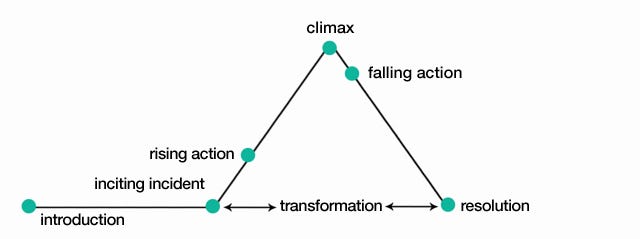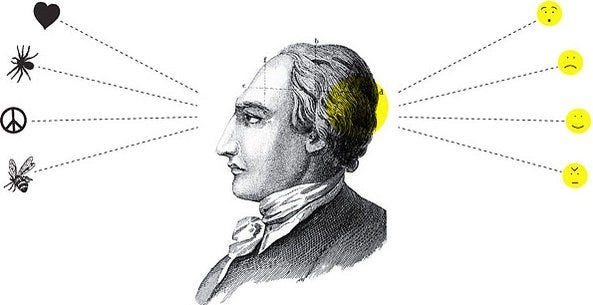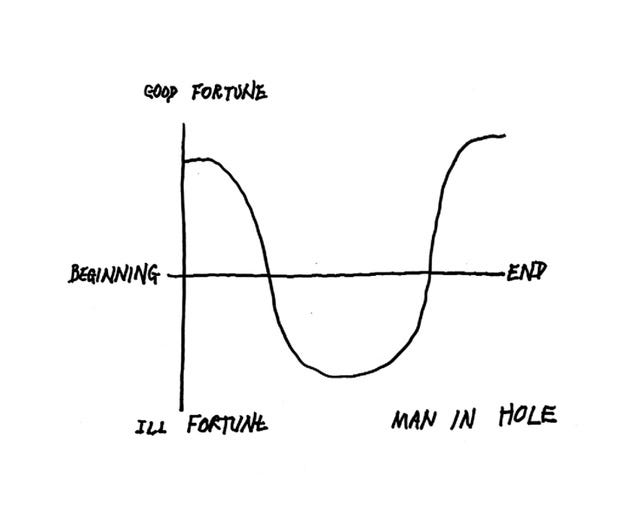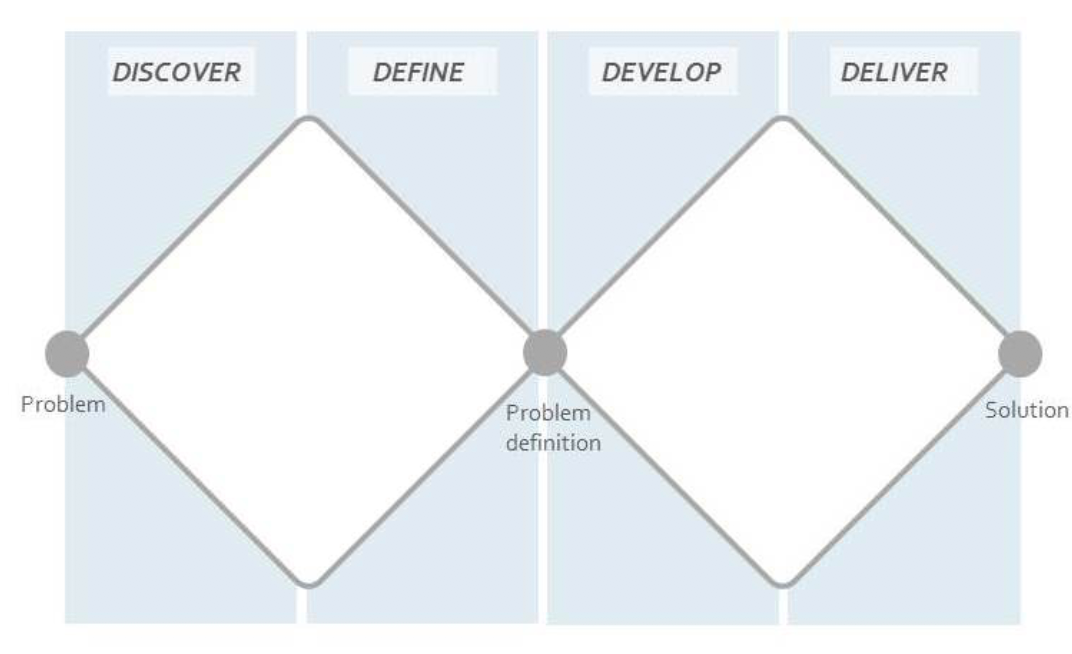

The Power of Storytelling in Building Products
source link: https://blog.prototypr.io/the-power-of-storytelling-in-building-products-f3fd54715b2d
Go to the source link to view the article. You can view the picture content, updated content and better typesetting reading experience. If the link is broken, please click the button below to view the snapshot at that time.
The Power of Storytelling in Building Products
Snippets from my Storytelling workshop
As designers, our work involves identifying problem areas and striving to solve them, but an important part of our process involves utilizing the magical element of storytelling to build a great user-centric product and subsequently translate the concepts and emotions we build in a way that resonates with the user.
“The stories we love best live in us forever”
~J.K. Rowling
In November 2019, I conducted a workshop on storytelling at DesignUp Bangalore that was about integrating storytelling in the form of a product vision, into our everyday product design process. 25 attendees joined us from Design, Research, Journalism, Management and Engineering backgrounds.
The session was filled with interactive activities such as interpreting stories based on life experiences, and creating a hypothetical product vision with fictional characters. The workshop concluded with a product vision exercise was a group activity that aimed to focus on creating and communicating a compelling narrative for an existing product, rather than creating a new product solution in a short time.

The aspects of ‘Why Storytelling matters’, ‘What is Storytelling’ and ‘How we can apply this in the work we do’ were addressed, and have been elaborated in this article.
Storytelling is a crucial tool in crafting narratives and translating concepts to both internal and external audiences. From a business point of view, this enables us to gain user buy-in, support, resources, draw attention to a problem or issue, ensure that people drive to the right topics and decisions, demonstrate the value of the work we do, drive alignment across teams, and contribute to the culture of the team
Stories have the power to grab attention, transfer knowledge, and influence beliefs and behavior. We all recognize a good story when we hear or see one. But for many people, it’s hard to create an authentic story that can hit the mark for a specific business purpose, whether it’s to find common ground with a contentious stakeholder, connect with a customer, lead a team through transformation, or simply reach a personal goal. Storytelling gives you a framework to help measurably impact important outcomes.
The Storytelling Brain
In an experiment conducted by Paul Zak, a neurologist to understand why the existence of a narrative increases the donation amount by 20–40%. They gained insights via a true story used at the center of this research, involving a 3-year-old boy dying of cancer, the father of whom was deeply sad knowing that the boy had only a few months to live. He tries to be joyful around his son, and in one of his statements says that it’s an amazing thing to know how little time one has left, and as he says this, he has merges himself with his son. It’s as if the father himself is dying.
In the lab, they studied this story extensively, and there are two primary emotions elicited — distress and empathy. As part of the study, they took blood before and after from the viewers, and they found that the brain produced two interesting chemicals- Cortisol (distress) and Oxytocin (care and connection). The more oxytocin released, the more they felt empathic towards the son and father in the story. When the individuals were given a chance to share money with a stranger in the lab. People with more cortisol and oxytocin donated more money. This narrative resulted in changed behavior by changing the brain chemistry.
The Significant Objects Project
“A narrative transforms the insignificant into the significant.”
The Significant Objects Project was an experiment was designed to test this hypothesis, the goal of which was to determine whether you could take an object worth very little and make it worth much more by giving it a story, by endowing it with meaning. A collection of unremarkable garage sale knickknacks for no more than a few dollars each were each assigned an intricate fictional back story by volunteer writers. These items were subsequently auctioned on eBay for considerably higher prices. The results may seem surprising, but the basic idea behind the endowment effect, the theory that once we own something, its value increases in our eyes and is a subjective concept. Value was created by the power of stories, and this involved injecting meaning into the most esoteric things.

The Dramatic Arc

Joseph Campbell, a researcher from the 20th century, penned ‘The Hero’s Journey’, a very familiar arc that presents a common architecture to all stories. George Freytag created the story skeleton with the must-have elements of people, places, problems. This involves the Exposition (a story frame of characters moving along through life), Rising action: An event happens, Climax: an inciting incident/s that creates enormous complications that ultimately break one way or another, Falling action: then the dust settles, Resolution: the character is changed
A short silent abstract film showcasing a series of geometric shapes was produced as a research experiment. Our brains are pattern recognition machines. People told different stories about the same film and assigned meaning to it by drawing from their experiences, world view, knowledge and values.

The Shape of Stories
Kurt Vonnegut once said “Stories Have Shapes”. A few years ago, a group of researchers from the University of Vermont digitized thousands of e-books and ran them through sentiment analysis using this same framework to represent stories via shapes from happiest to saddest over the course of time.
Kurt Vonnegut on the Shapes of StoriesWhat they recognized was that a set of six patterns emerged, which were essentially 6 essential universal story shapes:
1. Rags to Riches — in which the sentiment goes up
2. Tragedy — in which the sentiment goes down
3. Man in a Hole — there’s a fall, then a rise
4. Cinderella — rise-fall-rise
5. Icarus — where it’s a rise then a fall
6. Oedipus — fall-rise-fall
All the above stories include pain and struggle, because stories don’t resonate without them. We need to spend time in the lower X-axis dimension. You can take a story and chart it on an X and Y axis where Y axis is the good or bad fortune of the character in the story and the X axis is the timeline. The ‘Man in the Hole’ story is about solving for trouble, and it’s just one type of story shape.

Problem finding
The user-centric design process involves crafting user stories as a lens to analyze the product and identify problem areas such as to:
· Articulate the target user
· Understand the Jobs to Be Done
· Understand the user scenarios and user journey
· Map the user hassles along the way

A Day in the Life of a User
This involves brainstorming (or pain-storming), wherein the product capabilities need to be translated into user stories. This is required to provide a meaningful structure to illustrate how these activities come together to achieve the product vision. User stories describe how a capability will work from the perspective of the person who uses your product. They zoom into the hero flow to describe each step of the flow in more detail. This is where broad design decisions become specific feature requirements, and act as a bridge between capability and feature. This is how we find the right problems to solve.
How to prioritize the right solution?
We see an idea in our mind’s eye, and we feel that it’s obvious. But we don’t include the imagery to this, which consequently doesn’t translate to your audience. Prioritizing ideas helps in removing irrelevant data and addresses the constraint of insufficient engineering capacity to build the ideas. It also helps in depoliticizing functionality suggestions and potential product features by ranking the ideas based on how much they support your Emotional Value Proposition. A guiding North Star can be used as a thematic filter for ideas to align all your developmental activities and efforts toward your goal. Evangelizing the idea via vision videos establishes context, laying out all the hassles and defining the promise statement of the story. This highlights all the value of the product and filters it down to the essence.
Launch! Landing the story well
A regular launch cadence for interim releases gives the team the ability to make changes quickly. This method helps in feature change prioritization and pushes out the updates as they get completed, rather than waiting to align changes to a larger and stretched release cycle. Regular launches drive a sense that the product is malleable and drives the feeling of forward progress and empowerment. Launching new products or achieving significant usage milestones are cause for celebration and reflection for the team. Authenticity builds trust.
And finally, we need to keep listening. This includes reading every support ticket in order to be aware of the customer voice and qualitative reviews. Launching a feedback tool that allows customers to ask for help in a structured format is important to understand behavioural trends and the impact product changes are having on product usage. At the same time, we have to judge each request and accordingly make changes based on whether it represents a larger product problem.
Recommend
About Joyk
Aggregate valuable and interesting links.
Joyk means Joy of geeK